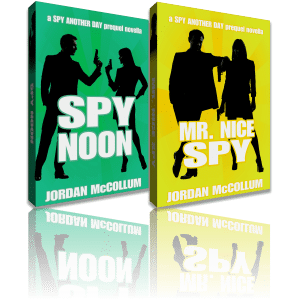Determining your story’s focus is a major part of revision (re-vision). This works on a number of levels—characters, plot, theme, structure, scenes, etc. Whenever you can’t quite put your finger on this character’s main motivation or the novel’s theme or this scene’s purpose, you might be facing a problem of focus.
 Here are a couple things you can do to hone a book’s focus, from the theme down to the more granular level.
Here are a couple things you can do to hone a book’s focus, from the theme down to the more granular level.
- Think long and hard about the theme (Yes, this is a revision skill!). If there are two competing themes in the book: one of ignorance being bliss, and one of loving someone being a strength rather than a weakness, it may make it feel like we’re telling almost two different stories. Can you make the themes relate to one another? Make one subordinate to the other? Rephrase/rethink/reframe/re-present one so that they are corollaries? Or maybe pick one and focus on it, and make sure the other stays a subplot?
- Once you’ve pinned down the theme, look at each scene and each character and each character’s journey. How do they support the theme? (If you’re having trouble with the last point, maybe do this first, writing out what each character’s journey and purpose in the story are currently, and looking at trends before you decide which theme to go with or how to correlate them.) How does that character/scene/journey express or support the theme?Does it serve as a counterexample, and if so, is it presented in a negative light or with negative conclusions? (This is loosely inspired by Holly Lisle’s one-pass revision technique.)
- A scene chart, with special focus on scene goals. This makes sure that each scene drives the story forward. I always do this: make a spreadsheet of all the scenes in my book, whose POV they’re in, what information is conveyed, but most importantly what the POV character’s goal is going into the scene. Most of the time, the character will pretty much state the goal outright at the beginning of the scene, keeping the scene and the character moving forward with purpose instead of meandering about, waiting for a story to happen to him/her.
- Tension check! This is something I have to do with every book, and I usually do it as part of the scene chart. One of the columns is dedicated to writing out the source of the tension in that scene. If I don’t know, I look for an antagonist or a disaster. Typically most scenes end in disaster, at least from the perspective of the POV character who came into the scene with a stated goal. Then, when I go through and edit the scene based on that, I make sure that tension is there in every page.
- Stakes check! Again, this can be done in the scene chart, or on a higher level, like chapter or section. Ask what is at stake—what happens if the character doesn’t achieve his or her goal? What are the consequences? Do they know that? Can we be reminded of that? (This can also be a subtype of the tension check.)
- Look at the language itself. Is the language specific, concrete and vivid? Can we really see a vivid picture of people (visual and characterization) and settings and emotions and experiences?
What do you think? How else can you help to focus an unfocused theme or story? Come join in the conversation!
Photo credits, respectively: Atondra Hall, Riccardo Bandiera

